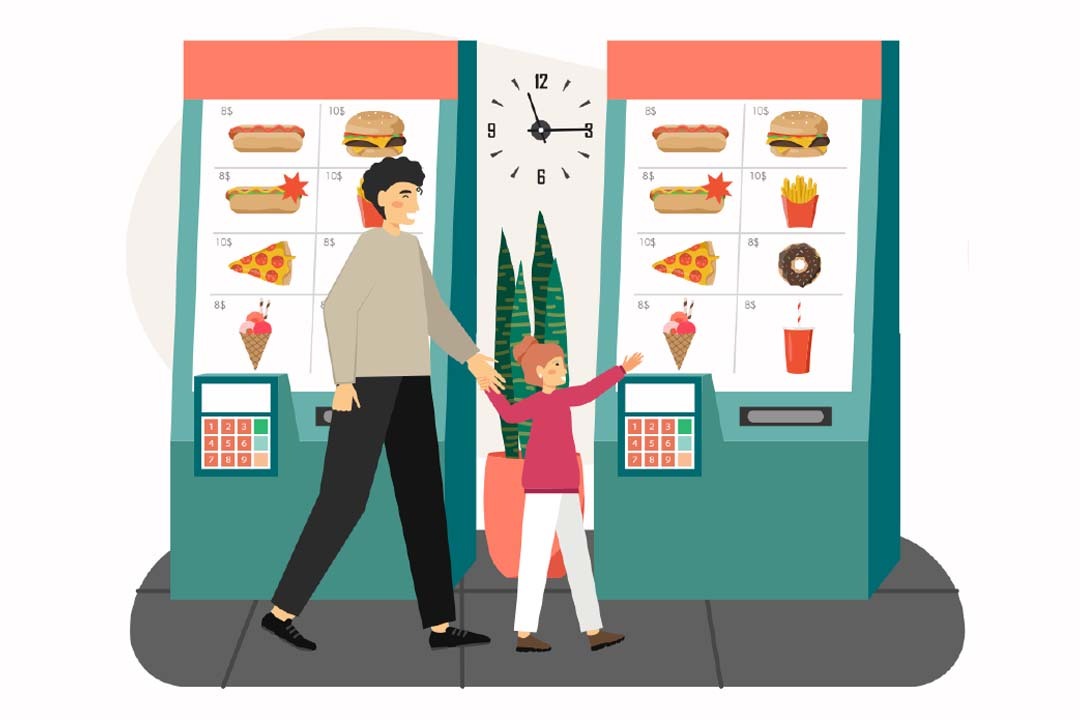So much has changed in the restaurant industry over the last few years, and QR Codes are only the beginning. Consumers are no longer asking; they are demanding personalization (McKinsey: 76% of consumers get frustrated when companies fail to personalize their offerings). Customers expect digitally enhanced experiences to meet their needs as they evolve.
We can see this in more than just survey data. One look at quick service restaurants proves that the brands stealing market share in 2021 led with digital.
Strategies among the top 10 vary in HOW they deploy and integrate digital signage, but signage is a consistent keystone.
Here are some of the best ideas that are driving growth for quick service restaurants.
7 Indoor Digital Signage Best Practices for Restaurants
Digital signage brings many capabilities and pitfalls. But you do not need to reinvent the wheel, only learn from what leaders are doing (and not doing) today.
1) Say no to full screen takeovers
Six years ago some restaurants experimented with digital signage, and there were some important failures that need to be kept top of mind. Full screen takeovers are a great example.
Full screen takeovers sound great for the business, but they only annoy customers. Think about it for a second. Do you enjoy those websites that serve you an ad before you even see the content? Full-screen popups annoy prospective customers at the best of times, but they go too far in a restaurant environment where the guest wants to sit back and enjoy the experience.
Resist the urge to push full-screen messaging on your clientele. Don’t do it! Take a more considerate, customer-centric approach.
2) Don’t push: Personalize
Any guest will not appreciate a push strategy like the one just mentioned, but they will appreciate a pull strategy. Pull strategies are focused on meeting the customer where they are to deliver the right content at the right time.
Over 65% of consumers expect brands to personalize in these ways:
- Make it easier to navigate
- Provide relevant product/service recommendations
- Tailor messaging to needs
- Offer targeted promotions
(McKinsey, 2021)
At its core, personalization is about increasing relevance, so that customers can achieve the results they want easier and faster than they would have. At the same time, personalization builds loyalty and trust by demonstrating the value of returning to your restaurant. If you can personalize your recommendations based on their history, then that next-level experience give guests another reason to plan their return visit.
3) Dayparts: Increase relevance with context
Digital signage opens up a wide range of capabilities that can power your current business strategy and maintain relevant communications with customers. Start by dividing the schedule into dayparts. This allows you to target the most popular guests at a specific time of day and week, rather than a more general audience. Franchisees often find dayparts incredibly valuable, since they can respond to real-world events. Do students from the local high school stop by at 3:30? With dayparting, you can target key achievements with this audience at this time, without sacrificing experience for the lunch rush or dinner crowd.
4) Showcase local flavors
Buying local is a great way to increase value, but communicating that you have purchased local foods can be a challenge — especially when this can change on a daily basis. Digital signage systems can be set up to communicate this ‘live data’ on the fly, for each meal, which can increase the perceived value of the food and make the dining experience more unique and memorable. These help the brand build trust and increase satisfaction, loyalty and influence.
5) Book slow periods
As an operator, slow periods are another challenging workaround. Digital signage allows restaurateurs to advertise special deals to fill those periods consistently.
6) Reduce Turnover
Employee communications cannot be emphasized enough with all the workforce challenges in the hospitality industry over the last two years. It is incredibly important to be able to ramp up employees quickly and retain them better than competitors. Especially in the kitchen, where touching a mobile device can be a food safety violation, digital signage can keep communications open. This helps forward corporate branding, reinforce new skills, and more.
7) Driving strategic goals
We’ve discussed a couple particular tactics that can help restaurants personalize the guest experience, but how do you choose what to do, and when? Choosing these goals is as simple as asking the question, “What do you want to achieve?” What makes digital signage so different from other mediums is that the answer can and should change at any given moment of every day.
For more information on how the largest quick service restaurants use digital signage to accomplish key objectives, from revenue and profitability increases to beverage attach, check out our white paper, Evolution of the QSR.
